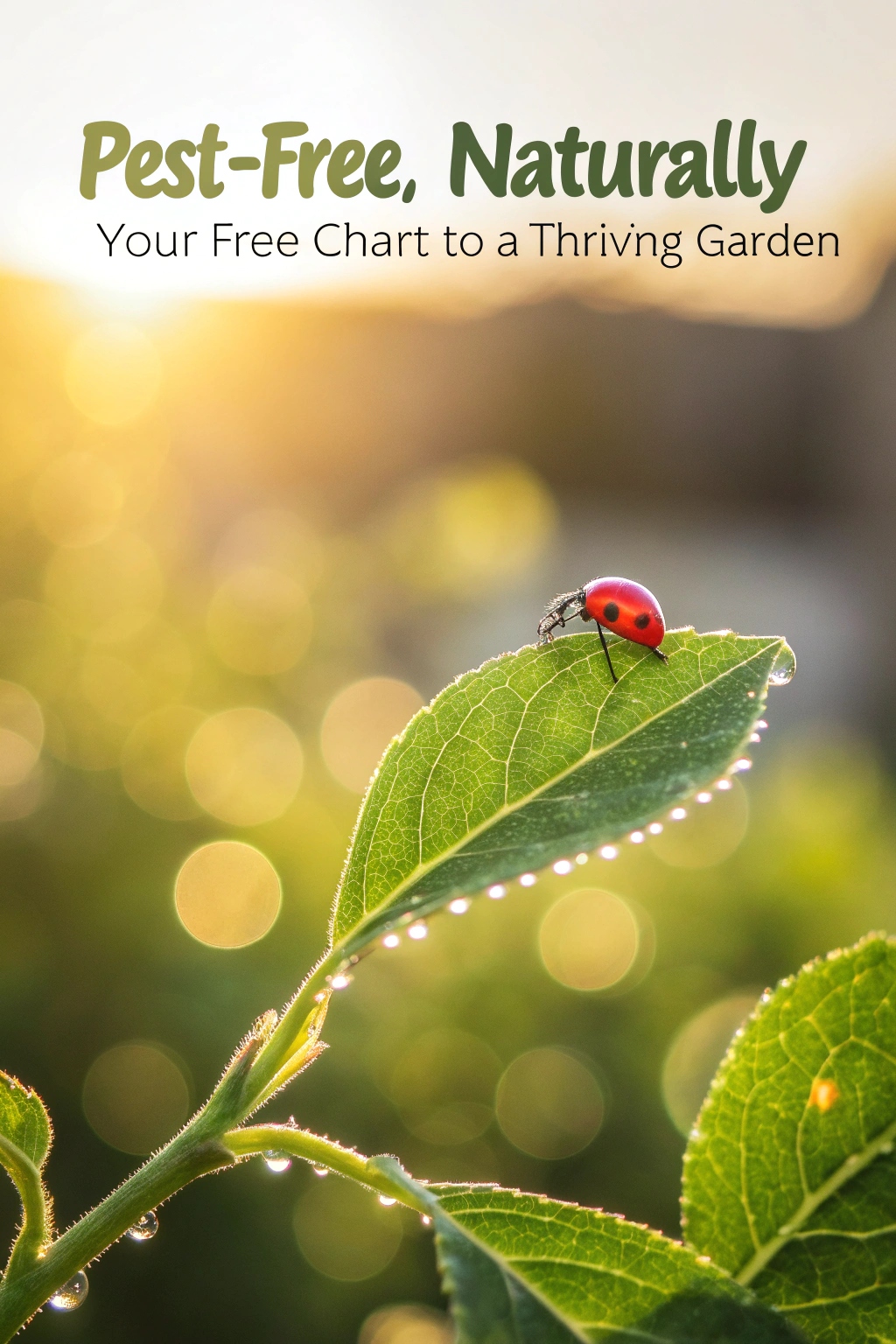Transforming your small outdoor space into a serene Japanese garden can bring tranquility and harmony right outside your door.
By implementing minimalist design features like raked sand and pebble pathways, you can create a peaceful retreat. This is a great way to relax and unwind after a long day.
Want to know the secret to creating a calming atmosphere in your garden? Incorporating elements like bamboo or water features can enhance the serene ambiance.
Let’s explore 15 simple ideas that might inspire your own tranquil oasis and turn your outdoor space into a peaceful haven.
Embrace Minimalism With Gravel and Rocks
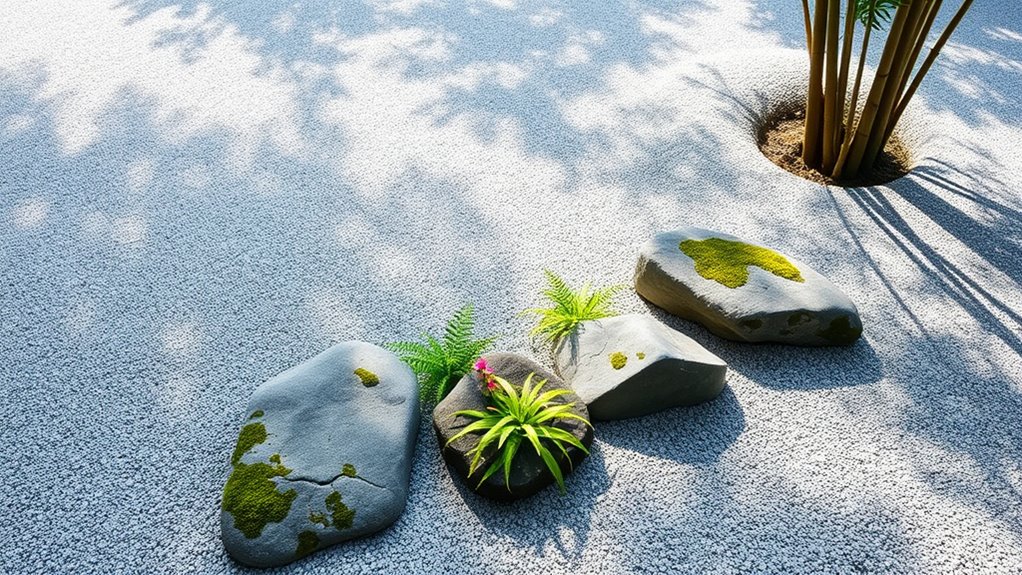
Embracing minimalism in a small Japanese garden can be beautifully achieved with the use of gravel and rocks. These elements create a serene landscape that reflects simplicity and tranquility. By arranging gravel in sweeping patterns and incorporating strategically placed stones, you can evoke the essence of nature while maintaining an uncluttered aesthetic. This low-maintenance approach not only allows for easy care but also encourages mindfulness, inviting peaceful reflection within your garden sanctuary.
Create a Zen Sand Garden
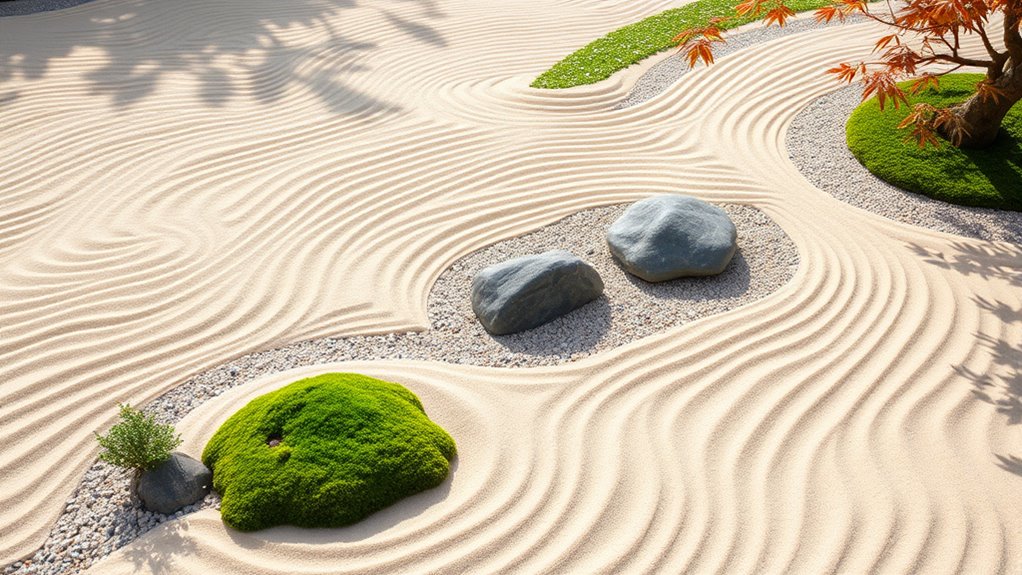
A Zen sand garden, or karesansui, is a serene and minimalist space that promotes tranquility and reflection. To create one, choose a flat, sandy area and outline your garden’s boundary. Rake patterns into the sand to symbolize rippling water, and incorporate small rocks or gravel to represent islands or mountains. Adding carefully placed plants, such as moss or dwarf shrubs, enhances the natural feel. This simple yet striking design allows for meditation and mindfulness in a compact area.
Incorporate a Small Water Feature
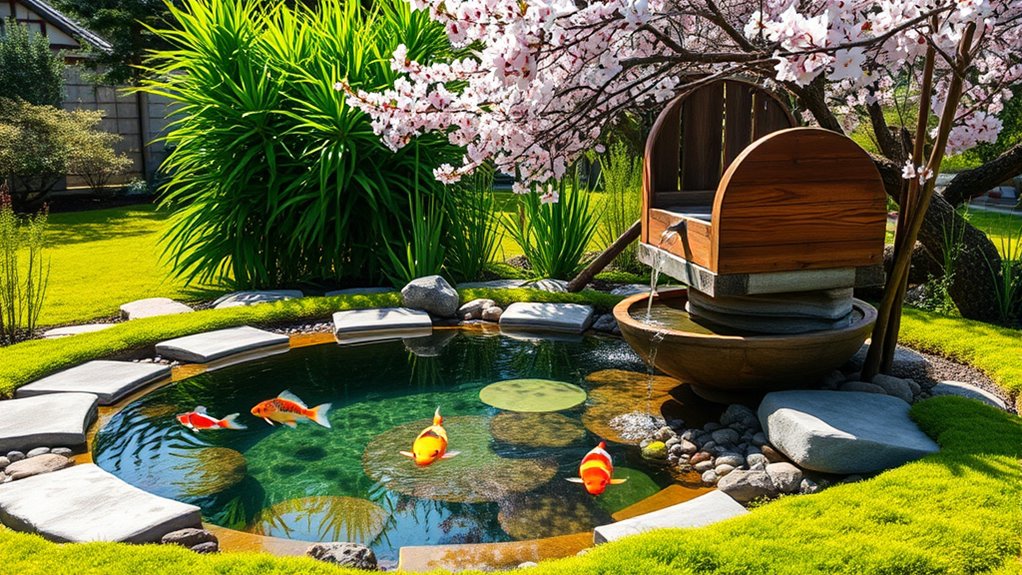
Incorporating a small water feature into your Japanese garden can enhance its tranquility and beauty. Consider a simple koi pond, a cascading bamboo fountain, or a pebble-strewn water basin. The gentle sound of flowing water not only creates a soothing ambiance but also attracts wildlife, such as birds and frogs. Additionally, a well-placed water feature can serve as a focal point, drawing the eye and inviting relaxation in your serene outdoor space.
Plant Bamboo for a Lush Look

Planting bamboo in your small Japanese garden can instantly create a sense of tranquility and lushness. Known for its fast growth and elegant appearance, bamboo serves as a natural privacy screen and adds vertical interest. Choose non-invasive clumping varieties to keep maintenance manageable. Mix different shades of green or complement them with ornamental grasses for a layered effect. With the right care, bamboo can transform your garden into a serene oasis reminiscent of traditional Japanese landscapes.
Use Stone Lanterns for Lighting

Incorporating stone lanterns into your small Japanese garden not only enhances its aesthetic appeal but also offers functional lighting. These lanterns, traditionally crafted from stone, create a serene ambiance by softly illuminating pathways and highlighting features like water elements or plants. Position them strategically to cast beautiful shadows and create focal points, encouraging evening strolls while celebrating the tranquility of your garden. Choose designs that resonate with the overall style of your garden for a harmonious look.
Design a Koi Pond
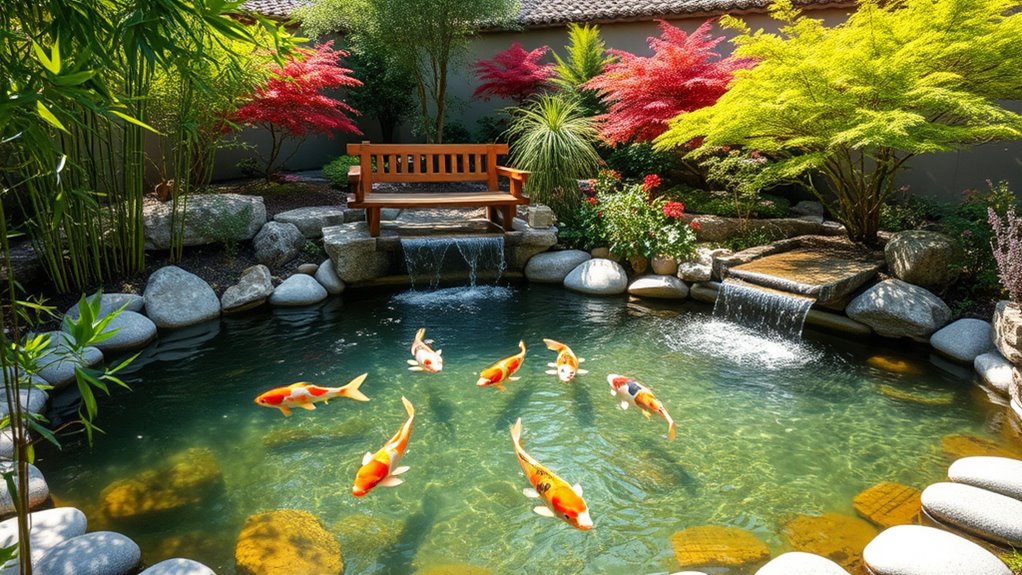
Designing a koi pond in a small Japanese garden can create a tranquil oasis and a focal point for relaxation. Choose a location that receives plenty of sunlight and is easily visible from seating areas. Use natural stones and plants to complement the pond’s edges, creating a harmonious blend with the environment. Including features like a small waterfall or fountain can enhance the soothing sound of water, while a variety of colorful koi will bring life and movement to your serene landscape.
Utilize Potted Plants for Flexibility
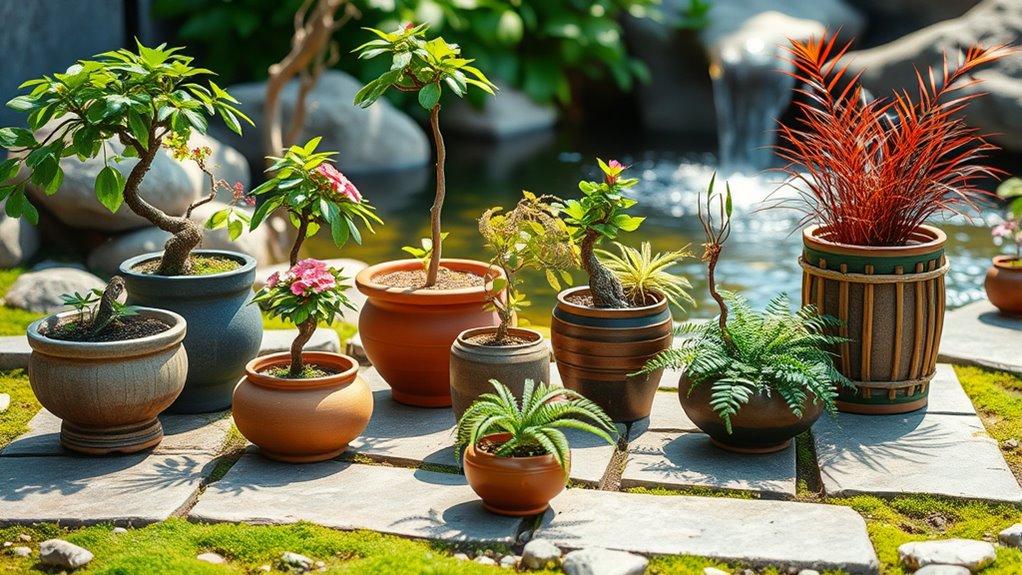
Potted plants are an excellent option for creating a small Japanese garden, offering flexibility in design and maintenance. By using different sizes and styles of pots, you can easily arrange and rearrange your plants to suit your preferences or seasonal changes. Incorporating traditional elements, such as bonsai or bamboo, alongside flowering plants can enhance the garden’s aesthetic. Additionally, potted plants allow for easy mobility, enabling you to adapt your garden layout whenever inspiration strikes.
Create a Pathway With Stepping Stones
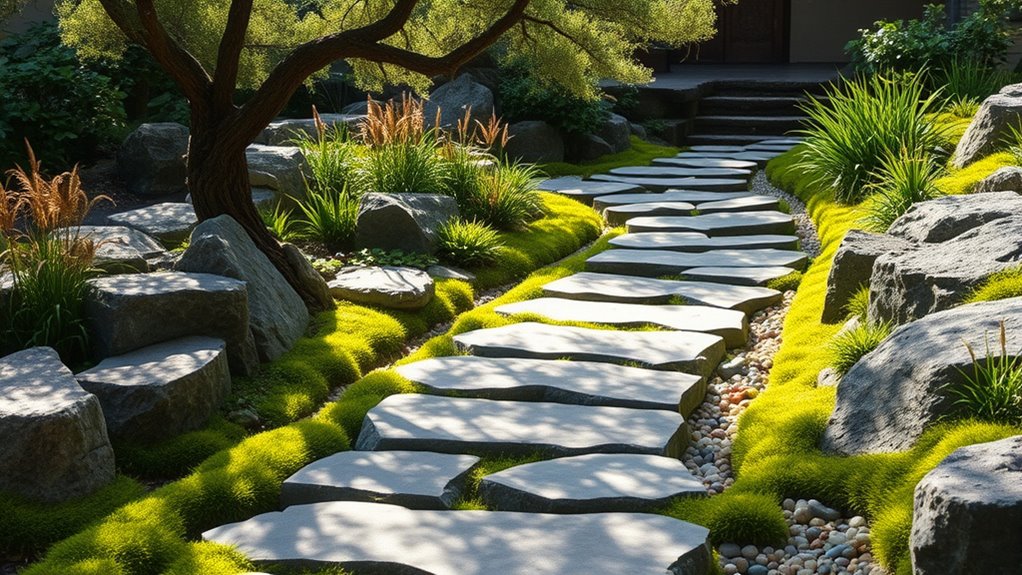
Creating a pathway with stepping stones is a delightful way to enhance the charm of your small Japanese garden. These stones can guide visitors through the landscape, inviting exploration and contemplation. Choose materials like natural stone or concrete to complement your garden’s aesthetic. Arrange the stones in a meandering fashion to mimic the organic flow of nature, and gently surround them with moss or gravel for added texture. This pathway not only promotes tranquility but also provides a sense of purpose in your garden design.
Introduce a Bamboo Fence
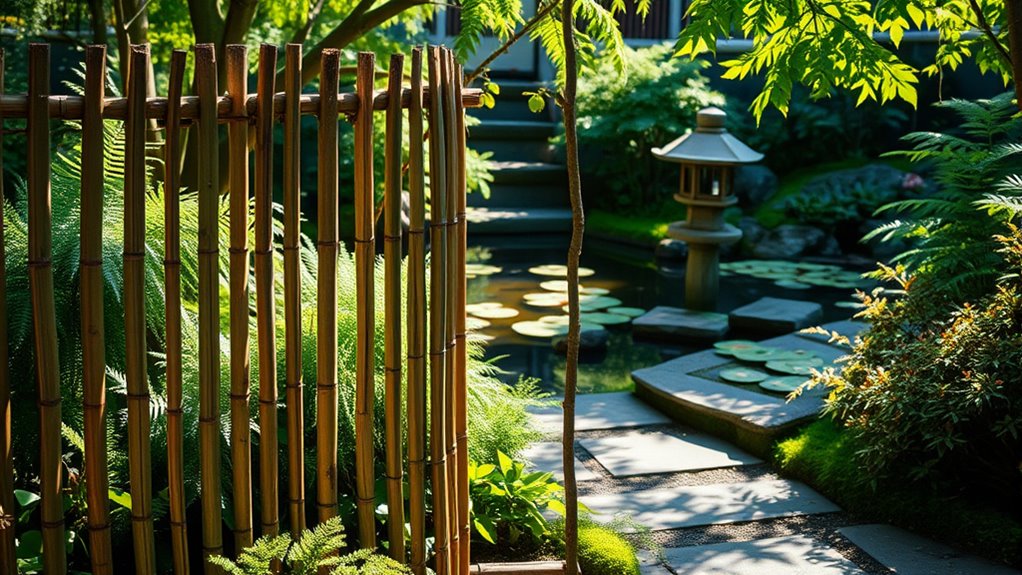
Introducing a bamboo fence to your small Japanese garden can enhance its serene and tranquil atmosphere. Bamboo, with its natural aesthetic and flexibility, creates a harmonious barrier that defines the space while allowing for a sense of openness. This eco-friendly material not only adds a touch of authenticity but also complements the lush greenery typically found in Japanese gardens. The calming sound of bamboo swaying in the breeze can further enrich the sensory experience of your garden retreat.
Add a Meditation Bench
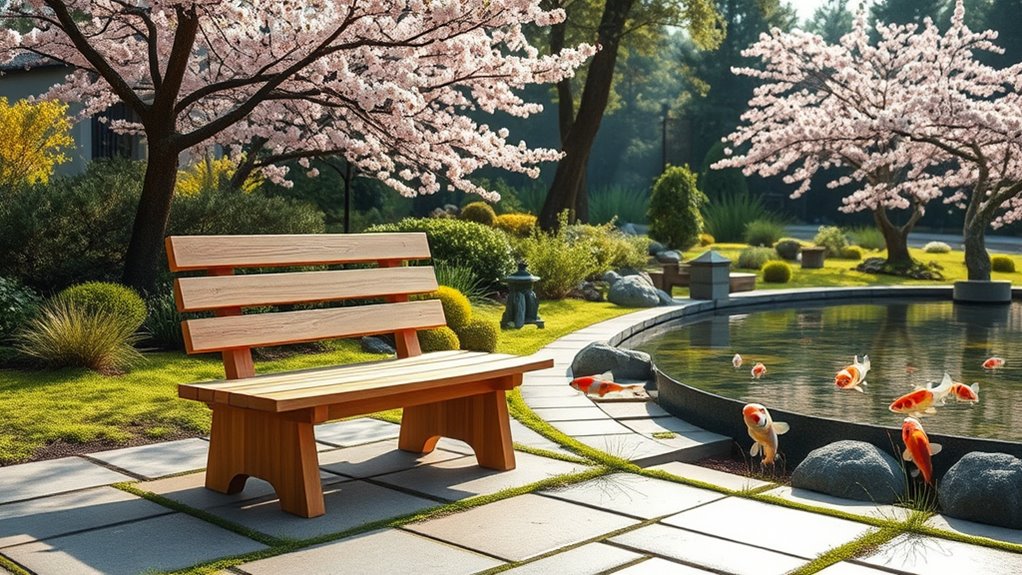
Incorporating a meditation bench into your small Japanese garden can create a serene space for reflection and tranquility. Choose a simple wooden bench, ideally finished with natural materials to blend harmoniously with the surrounding foliage. Position it near a peaceful spot, such as a koi pond or beneath flowering trees, where you can enjoy the sound of nature. This inviting seating area encourages mindfulness and appreciation of the garden’s beauty, enhancing its calming ambiance.
Incorporate a Japanese Maple Tree
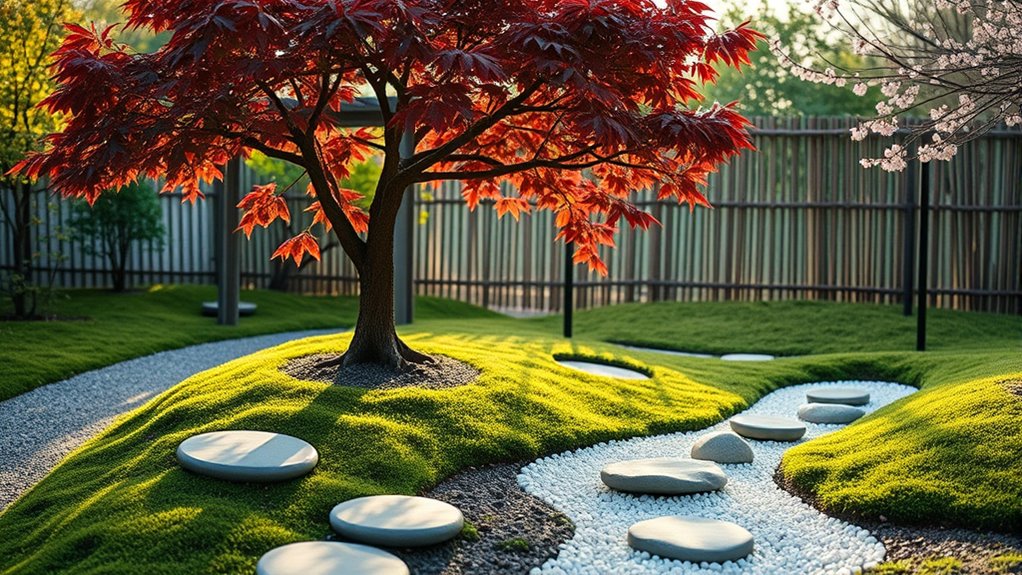
Incorporating a Japanese maple tree (Acer palmatum) into your small Japanese garden can bring stunning visual interest and a touch of serene beauty. Known for their delicate, vibrant leaves that change color with the seasons, these trees can serve as a focal point or a gentle backdrop. Select a compact variety for limited spaces, and position it near a water feature or stepping stones to enhance the tranquil ambiance characteristic of traditional Japanese landscapes.
Use Miniature Bridges for Aesthetic Appeal
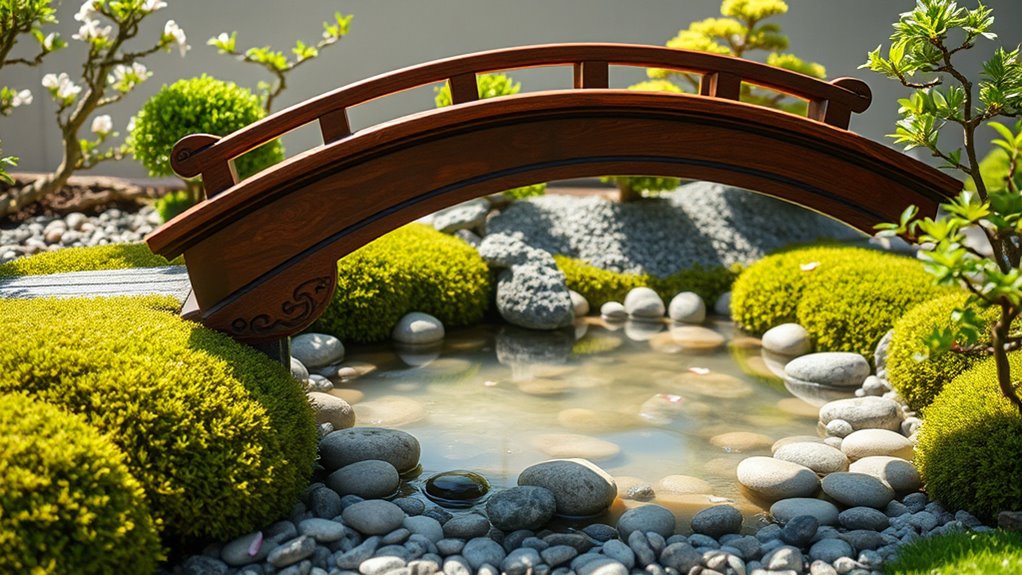
Miniature bridges are a delightful addition to small Japanese gardens, bringing a sense of charm and tranquility. They not only serve as functional paths over water features or garden beds but also enhance the visual interest of the space. Crafted from stone, wood, or bamboo, these bridges can create a focal point and draw the eye, inviting visitors to explore different areas of the garden. Their whimsical design encourages a connection with nature, embodying the essence of traditional Japanese aesthetics.
Build a Tea House or Shade Structure
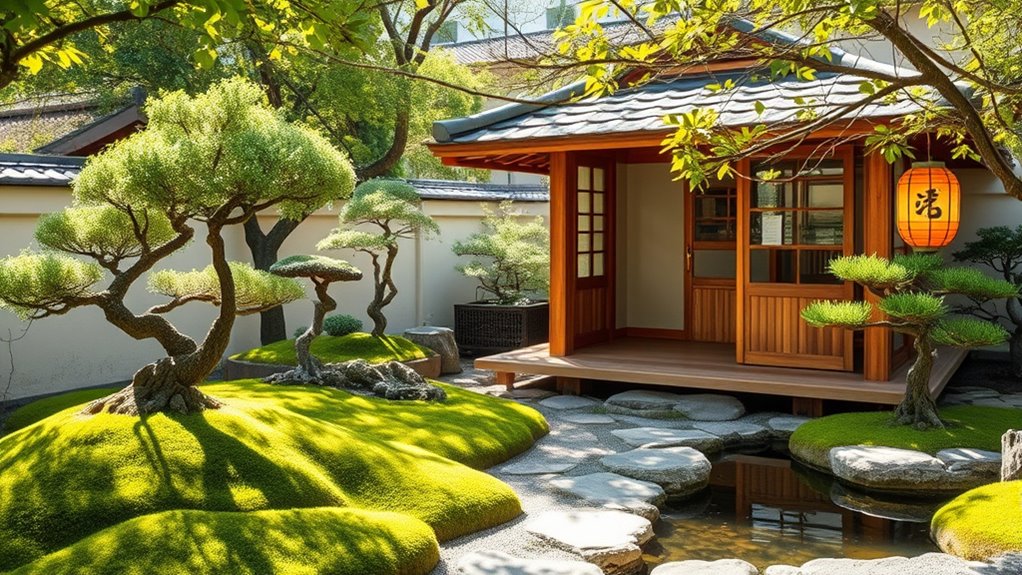
A tea house or shade structure can elevate your small Japanese garden, providing a serene space for relaxation and contemplation. Typically designed with natural materials like wood or bamboo, these structures blend seamlessly into the landscape. Incorporate sliding doors and tatami mats to enhance the authentic Japanese aesthetic. Positioned near a pond or amidst lush greenery, a tea house offers a tranquil retreat, perfect for enjoying tea ceremonies or meditative moments in nature.
Integrate a Dry Stream Bed
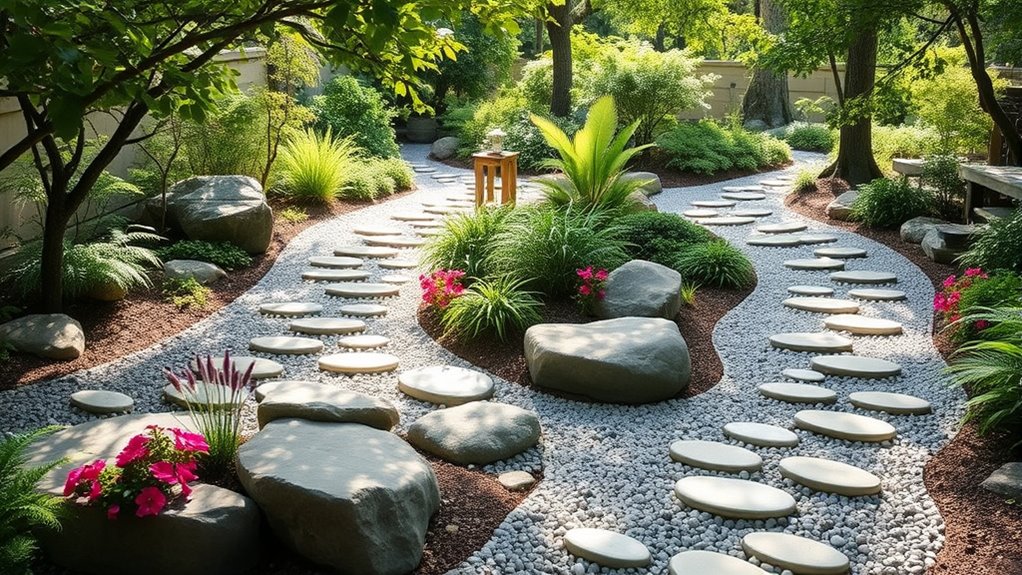
Integrating a dry stream bed into your small Japanese garden is an excellent way to enhance its tranquility and beauty. This feature mimics the natural flow of water, using gravel and stones to create a winding path that represents a riverbed. By incorporating smooth pebbles, larger rocks, and strategically placed plants, you can achieve a serene aesthetic. This design not only adds visual interest but also promotes drainage and reduces soil erosion, making it a practical choice for small gardens.
Add Seasonal Plants for Year-Round Beauty
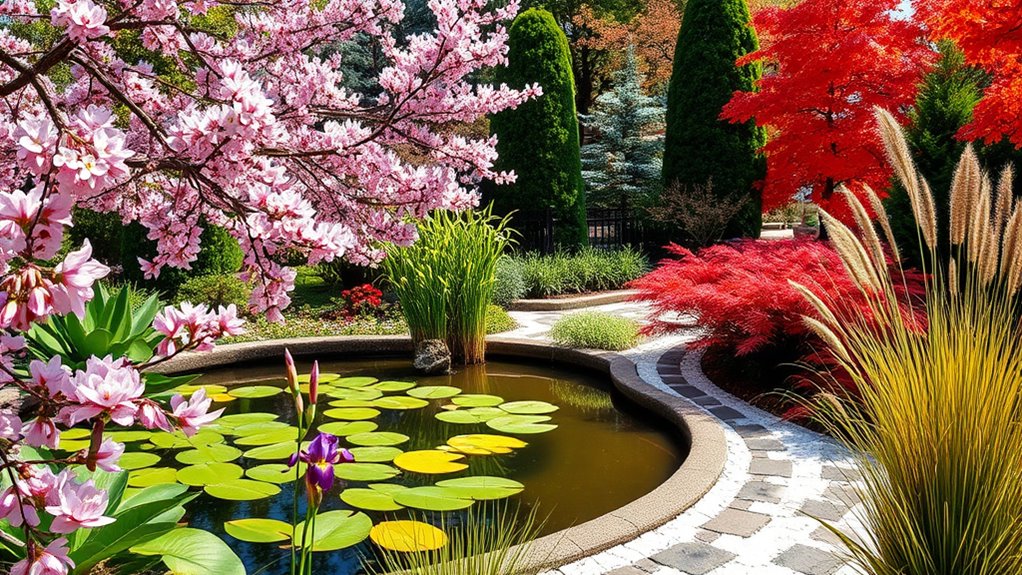
To maintain the charm of a small Japanese garden throughout the year, incorporate a variety of seasonal plants. Spring brings vibrant cherry blossoms and delicate irises, while summer showcases lush hostas and fragrant lilies. In the fall, the fiery colors of maples create a stunning display, and winter interest can be achieved with evergreen shrubs and ornamental grasses. This careful selection guarantees your garden is continuously enchanting, reflecting the changing beauty of nature across all seasons.
Conclusion
As you begin to transform your small outdoor space into a serene Japanese garden, imagine the soothing sounds of trickling water and the soft crunch of gravel underfoot. Each element, from the gentle sway of bamboo to the warm glow of stone lanterns, invites you deeper into tranquility. What hidden corners will you discover as you cultivate your retreat? Embrace the process, and let the garden reveal its secrets, promising not just beauty, but peace for your soul.



